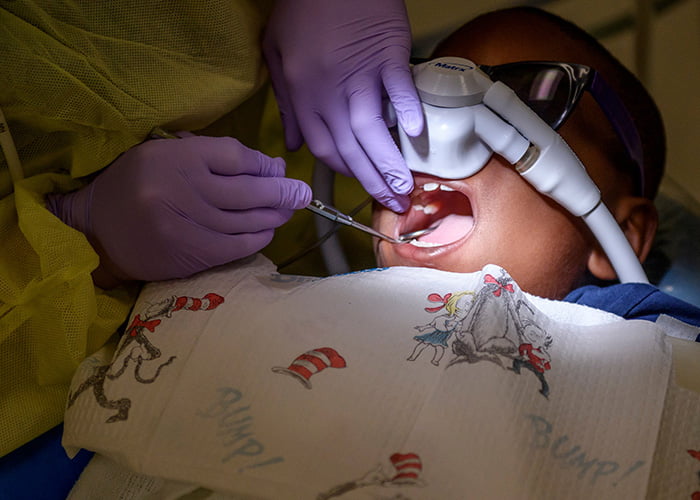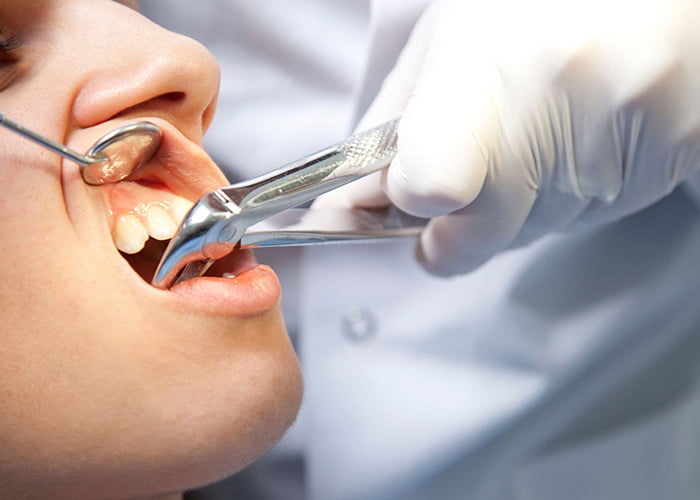Is Tooth Extraction Painful? The procedure for tooth extraction is painful. You will feel some level of discomfort as a patient undergoing an extraction both during and after therapy. You will receive a local anesthetic from the oral surgeon before the procedure to help with pain management. If necessary, it is also provided during the healing process.
After the surgery, the local anesthetic should start to wear off. Some patients could find this challenging. There are, however, many treatments that can help you quickly recover and decrease mouth pain.
Let’s look at the different types of anesthetic that the oral surgeon can use depending on your needs before we examine the treatments that help to reduce pain from tooth extraction procedures.
When Are Tooth Extractions Required?
When a tooth is too badly decaying, damaged, or infected to be repaired, you will need to have it extracted. Tooth extraction may be your only option if an injury-related trauma or severe decay prevents the tooth from being treated with a crown or dental filling.
A badly decayed or damaged tooth can no longer be kept in the mouth; if it is delayed, the infection may develop and affect other parts of the body.
Similar to impacted teeth, impacted wisdom teeth develop when there is not enough room for them to erupt, causing them to grow sideways and harm neighboring teeth. Jaw pain, discomfort, crowding, tooth decay, and gum infection may occur from this.

What Does a Tooth Extraction Feel Like?
The procedure will begin with an anesthetic for the tooth, gums, and surrounding tissue, whether you receive a basic or surgical extraction. You could feel a tiny “bite” from the needle at this stage. However, many people report that treatment is pleasant and that any discomfort they have is brief. You shouldn’t experience any pain after that.
However, since the anesthesia does not stop the tooth from moving, you might feel pressure from it. You can suffer some post-operative swelling when the extraction is finished. Thankfully, this can be avoided by using an ice pack or cold compress for 10 minutes at a time.
Read more: Can I have a tooth extraction during pregnancy?
Oral Sedation and Anesthesia for Tooth Extractions
Oral sedation induces sedation by administering an oral medicine (a tablet or pill) at a predetermined time before your dental treatment. After taking these drugs, patients usually nod off and sleep through their dental procedures. Oral sedation is categorized as “conscious sedation” since the patient is still able to walk, speak, and respond to commands when they are unconscious.
Your dentist will be better able to select the appropriate medicine for your sedation appointment if you provide him or her with a complete medical history. Dentists employ a variety of medications for oral sedation.
Your dentist will be better able to select the appropriate medicine for your sedation appointment if you provide him or her with a complete medical history. Dentists employ a variety of medications for oral sedation.
All patients undergoing extractions are, in a sense, sedated. When extracting teeth, dentists always use a local anesthetic to block out pain and sensation. A local anesthetic is a drug that is injected into a tiny area close to the surgical site to numb a specific or “localized” location. Depending on the drug used, this passing effect can last anywhere between one and eight hours.

How We Perform Tooth Extractions
The dentist’s office or hospital dental clinic will host the treatment. It can entail pulling one or more teeth. Antibiotics may be prescribed to you before the procedure.
- To make the area around the tooth painful-free, a local anesthetic will be administered.
- An elevator, a tool used in tooth removal, may be used by your dentist to dislodge the tooth in the gum.
- The tooth will then be pulled out of the gum by your dentist using forceps that are placed around it.
If you require a more involved tooth extraction, you might receive both sedation to make you feel calm and drowsy and anesthesia to make you pain-free. Using the techniques mentioned above, the surgeon might need to extract numerous teeth. The surgeon might need to cut a flap of gum tissue and remove some surrounding bone to treat an impacted tooth. Forceps will be used to extract the tooth. The tooth may be fractured into pieces if it is difficult to remove in one piece.
Read more: How much does a tooth extraction cost?
After your tooth is removed:
- Your dentist will smooth out the remaining bone and clean out the gum socket.
- One or more stitches, which are also known as sutures, may be required to close the gum.
- To stop the bleeding, you will be instructed to bite down on a wet piece of gauze.
What About After Tooth Extractions?
Depending on how complicated your situation is, the majority of people, however, return to normal in a few days. Within 48 to 72 hours, you can resume your normal activities, but it typically takes several weeks for the jawbone to fully recover. As a result, you’ll likely need to wait a few months if you want to replace the tooth with a dental implant so that you have time for a full recovery.
When to Call the Dentist
It’s crucial to make an appointment with your dentist as soon as you have tooth pain or other dental issues. They can assist in identifying the root problem and creating a customized treatment strategy.
If you’ve previously had a tooth out, call your dentist if you experience extreme pain that doesn’t go away with medicine, discharge (pus) around the extraction site, or a temperature of 100.4 degrees Fahrenheit (38 degrees Celsius) or higher.
Are you afraid of the pain of tooth extraction? Hopefully, through the article we provide, you are ready to perform your tooth extraction surgery. Call us if you have questions.



